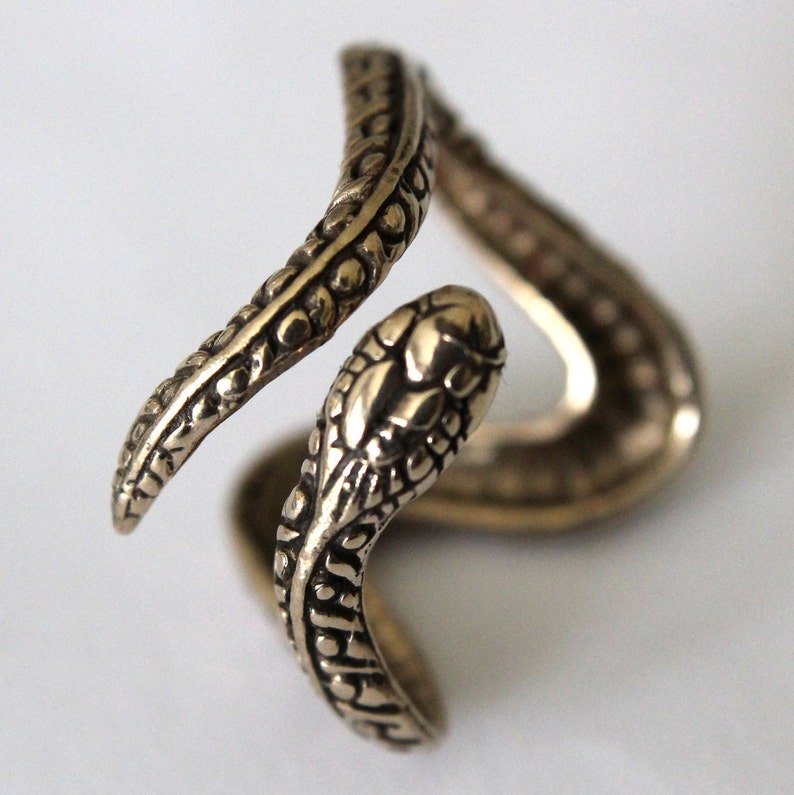

It’s typical for a ringneck snake to live a meager 5-6 years when kept as a pet. Strangely this species does not do well in captivity. The lifespan of the ringneck snake is around 20 years in the wild. There are an abundance of these snakes in the US and Canada, so you’ll likely come across them at some point. Then yes, it is very likely a common ringneck snake. So, if I see a Snake with a Yellow Ring Around it’s Neck…
#Snake ring skin
Juvenile ringneck snakes tend to be darker than adults, and since the scales have not developed, the skin feels velvety. The mouth is relatively small, and the eyes are round. The snake’s scales are smooth, and the anal plate is divided. The number of scale rows on the eastern species is 15, but on the western species, there are 17. The under surface also has irregular black spots, which are often used to identify the different subspecies. The undersurface is usually yellowish-orange, but some subspecies in the southern USA and Mexico may have an orange-reddish under the surface The ring is usually circumferential but can also be partial in some snakes. This ring is located at the junction of the head and the neck and maybe a solid white, red, or yellow band.Īs the snake matures, the band may become faint. In all cases, the color is solid except for an obvious golden ring around the neck, which is why it is named the ringneck snake. The northern ringneck snake is usuall y dark blue, gray, or brown, but the southern ringneck snake may vary from gray to green. The color of the ringneck snake does vary much among the subspecies. The ringneck snake is chiefly terrestrial, but it is capable of climbing small trees and shrubs. The Southern subspecies prefer wet locales like drains, marshes, swamps, and riparian woodlands. In the open woodlands, the snakes are located under the rocky hillsides and ravines. The western and northern subspecies prefer to hide under rocks, loose stones, or a pile of dead leaves. In the south, it prefers tall grass and forest-like areas. In the North, it prefers wet soil and slightly cooler conditions. The ringneck snake has a wide range of habitat. It i s hard for the snake to roam during the day, this is because the small snake has many predators. Unfortunately, the snake is nocturnal and very secretive. They love hiding under stones, and can very often be found there. If you want to find one, the best way to do so is by flipping over flat rocks. It also prefers wet shallow soil through which it can glide without much effort. The snake often hibernates underground, especially when the weather is warm. This includes tall grass, crevices, logs, or leaf piles. The ringneck snake prefers a habitat where it can hide. The ringneck snake is more concentrated along the eastern seaboard in the USA and Canada, but once it reaches Mexico, it is more concentrated along the pacific coastline. Their habitat extends from the Canadian provinces of Nova Scotia, Southern Quebec, Ontario, down to southern Mexico. The snake is located in Canada, Central, and Eastern North America. Ringneck snakes are common reptiles that have a wide range of geographical distribution in North America.

New York: The Metropolitan Museum of Art. A Guide to the Collections, Part 1: Ancient and Oriental Art, 2nd edn. 114, New York: The Metropolitan Museum of Art. Jewelry: The Art of the Goldsmith in Classical Times as Illustrated in the Museum Collection. "Greek Jewelry." Bulletin of the Metropolitan Museum of Art, 1(9): pp.


 0 kommentar(er)
0 kommentar(er)
